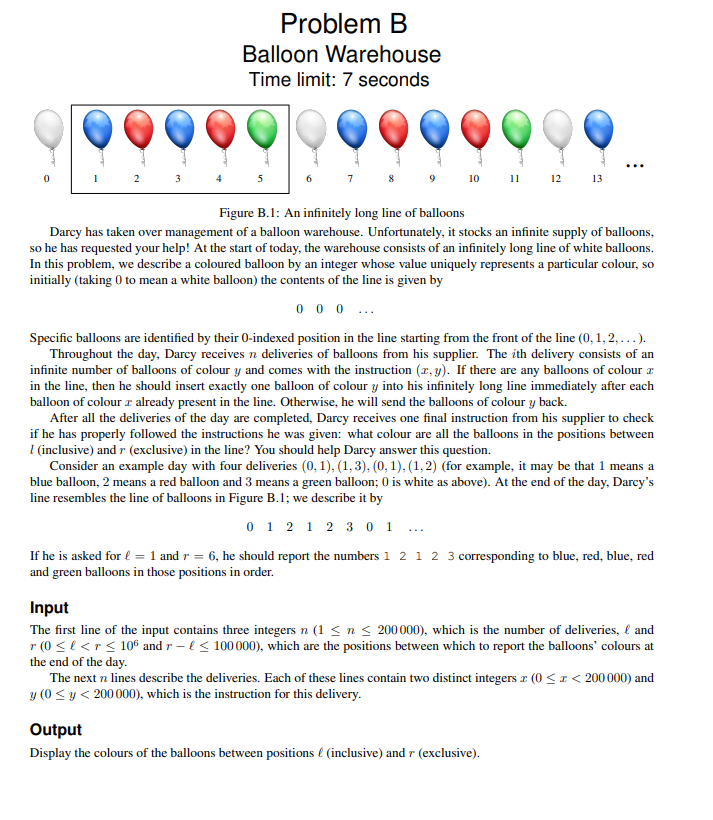
-
题意:给你一个无限长且元素均为\(0\)的排列,每次给你一对\((x,y)\),表示在所有\(x\)的后面插入一个元素\(y\),最后给你一个区间\((l,r)\),输出\([l,r-1]\)中的所有元素.
-
题解:我们用一个vector和pair来存储每次输入的\((x,y)\),显然,在\(x\)后插入的最后一个数一定是\(x\)后的第一个数,所以我们将按顺序插入的pair全部倒置一下,然后从\(0\)开始dfs:
x表示颜色,pos表示位置我们知道这个排列其实是一个循环节,记\(col\)数组是循环节的元素,\(cnt\)是循环节的长度,长度最多取到\(r\)就行了.
假如\(x\)后面的数的位置大于当前x的位置,那么就不断dfs的去找,用\(col\)来记录.
这里最难的就是这个位置的理解,要自己好好推一推!!!.姑且可以这么认为:pos大的在前面,pos小的在后面,只有v[x].pos>pos才可以dfs下去最后按循环节来输出即可.
-
代码:
#include <iostream> #include <cstdio> #include <cstring> #include <cmath> #include <algorithm> #include <stack> #include <queue> #include <vector> #include <map> #include <set> #include <unordered_set> #include <unordered_map> #define ll long long #define fi first #define se second #define pb push_back #define me memset const int N = 1e6 + 10; const int mod = 1e9 + 7; using namespace std; typedef pair<int,int> PII; typedef pair<long,long> PLL; int n; int l,r; int a,b; int cnt; int col[N]; vector<PII> v[N]; void dfs(int x,int pos){ if(cnt>=r) return; col[cnt++]=x; for(auto w:v[x]){ if(w.se>pos){ printf("%d\n",w.fi); dfs(w.fi,w.se); } else return; } } int main() { ios::sync_with_stdio(false); cin>>n>>l>>r; for(int i=1;i<=n;++i){ cin>>a>>b; v[a].pb({b,i}); } for(int i=0;i<N;++i){ if(!v[i].empty()) reverse(v[i].begin(),v[i].end()); } dfs(0,0); for(int i=l;i<r;++i){ printf("%d ",col[i%cnt]); } puts(""); return 0; }